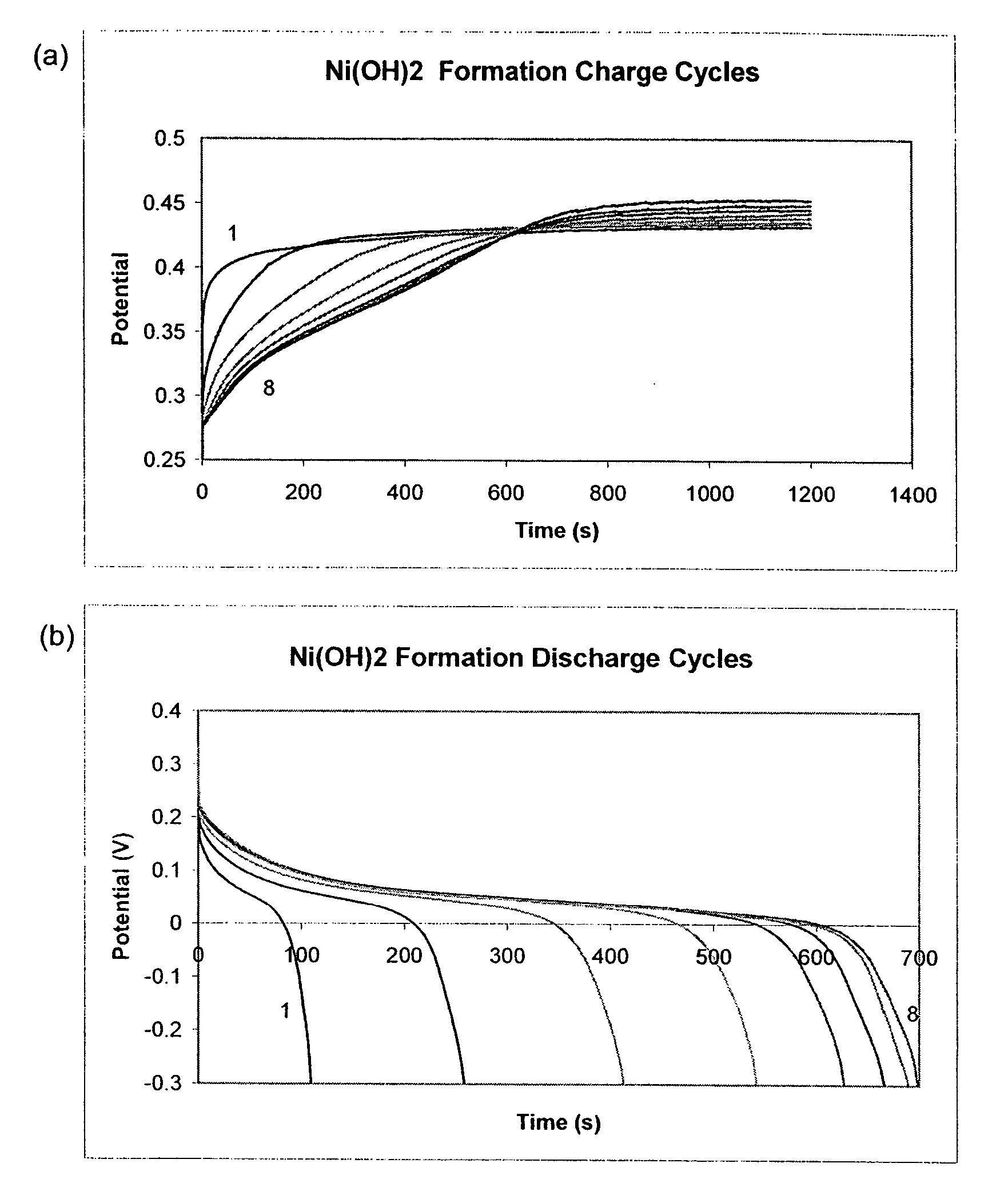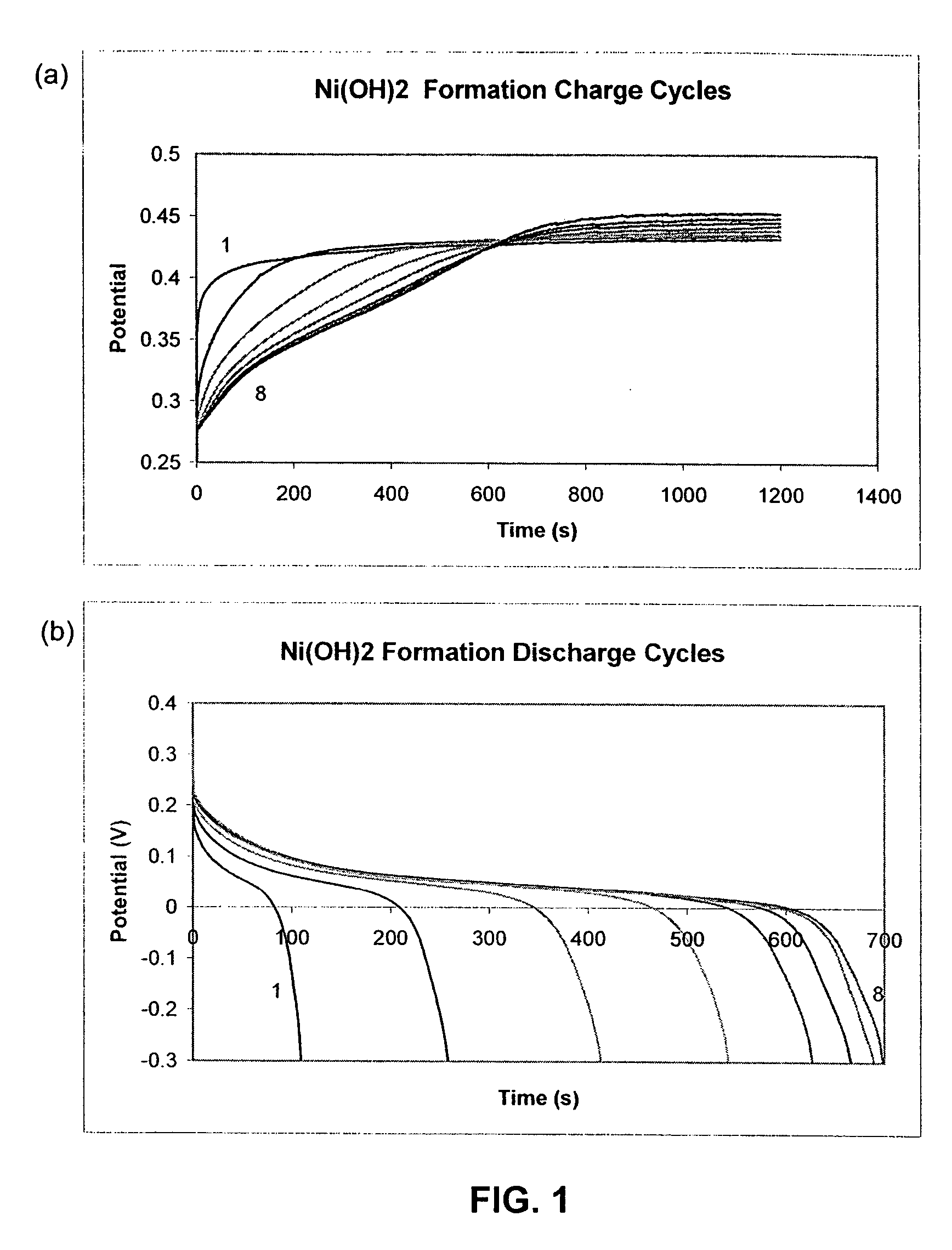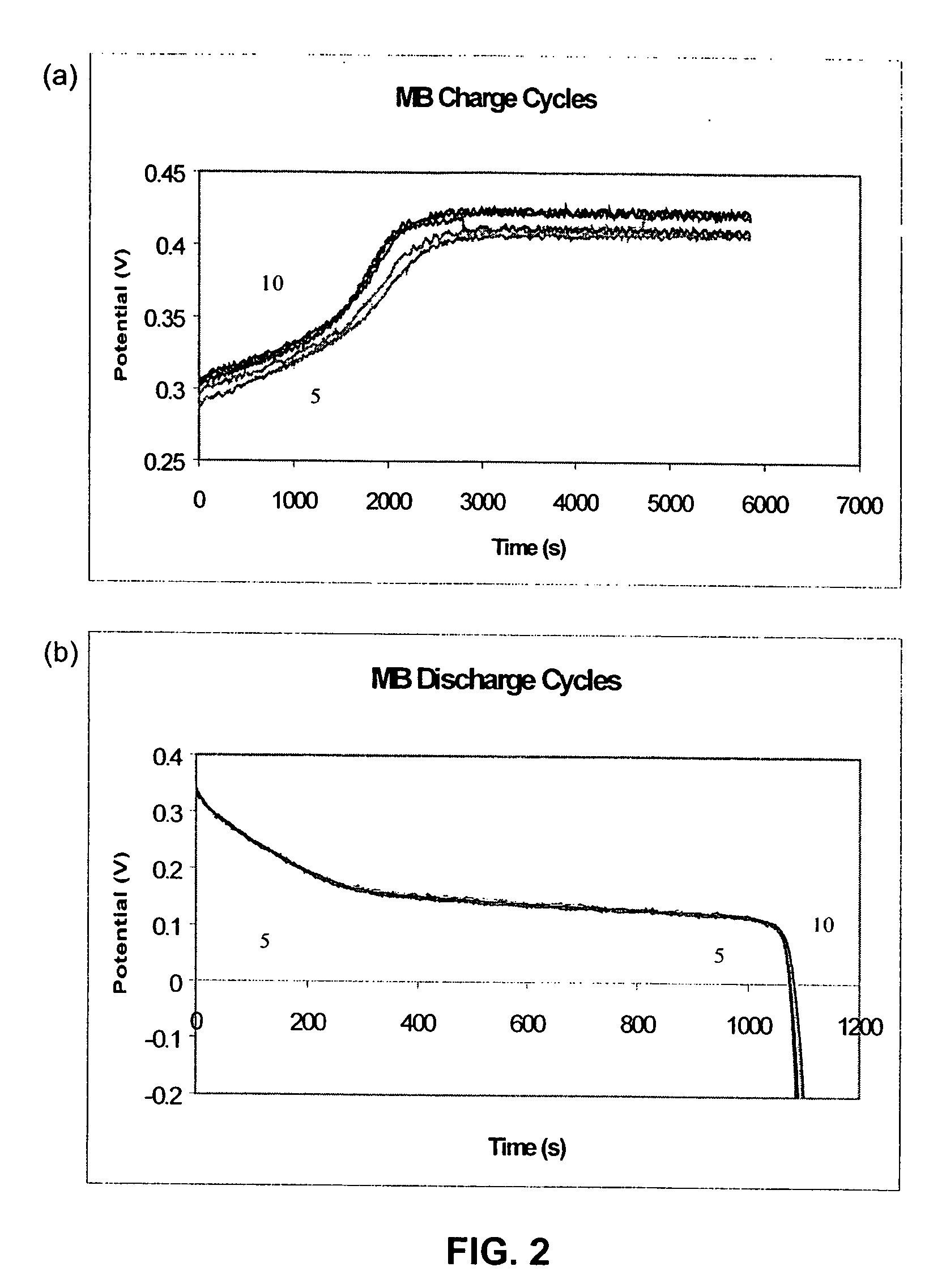Nickel hydroxide impregnated carbon foam electrodes for rechargeable nickel batteries
a technology of carbon foam electrodes and nickel batteries, applied in the field of nickel electrodes, can solve the problems of increased cost, high cost of nickel-based batteries, and insufficient disposal of ni—cd batteries
- Summary
- Abstract
- Description
- Claims
- Application Information
AI Technical Summary
Problems solved by technology
Method used
Image
Examples
example 1
[0112] Electrical Resistivity
[0113] Resistivity values for the various carbon foams is provided in Table 4. The resistance for the B series samples decreased as the graphitization temperature increased and reached a minimum for the B4 sample. The resistance increased as the graphitization temperature was further increased. For the D series samples, the resistance values became lower as the graphitization temperature was raised. Overall, the MB and Pf samples exhibited lower electrical resistances compared to the B and D series samples.
TABLE 4Electrical Resistivity MeasurementsSampleResistivity (ohm-cm)Nickel plaque0.0004Mitsubishi0.0032Pf10.0026D10.0311D20.0187D40.0216B10.0252B20.0236B40.0205B60.0221
1“What is PocoFoam,” http: / / www.pocothermal.com / html / whatis.html (Sept. 20, 2002).
example 2
[0114] Sample Porosity
[0115] The results of porosity measurements for the foam samples are listed in Table 5. With the exception of the MB foam, the porosities are similar to that of the porosity of commercial nickel plaque. The MB foam exhibits a slightly lower porosity than the others. SEM results suggest that the pore sizes of the B and D series foams were considerably larger than that of commercial nickel plaque (Table 8). Available literature values are given in the table for commercial nickel plaque, MB foam and Pf foam.
TABLE 5Pore Size Comparison of Different Carbon Foam SamplesSamplesPore Size (μm)% Porosity (Ave.)Nickel Plaque150-7070-85MB29055-60 (56)Pf335070-77 (75)B Series4>100070-75D Series4>70075-80
1G. Halper, “The Nickel Hydroxide Electrode - An Overview,” Nickel Hydroxide Electrodes, Proc. Vol. 90-4 (D. A. Corrigan, A. H. Zimmerman; Eds.), The Electrochemical Soc. Inc., 1990, pp. 3-8.
2J. Klett, “High Thermal Conductivity, Mesophase Pitch-Derived Carbon Foam,” www...
example 3
[0116] Formation of Active Mass
[0117] The charge and discharge cycles during the formation step of active mass are shown in FIG. 1. For most samples, the active mass was completely formed after eight cycles of forming. For those samples that had a higher level of loading and pore filling, the capacities obtained on discharge were comparatively low compared to the amount of charge, as eight cycles of formation did not charge them to their full capacity. The completely formed samples were black in color and had stable capacity. The samples that were not fully activated after formation had some green nickel hydroxide deposits visible in the pores. These samples were then fully activated during the constant capacity cycling tests.
PUM
 Login to View More
Login to View More Abstract
Description
Claims
Application Information
 Login to View More
Login to View More - R&D
- Intellectual Property
- Life Sciences
- Materials
- Tech Scout
- Unparalleled Data Quality
- Higher Quality Content
- 60% Fewer Hallucinations
Browse by: Latest US Patents, China's latest patents, Technical Efficacy Thesaurus, Application Domain, Technology Topic, Popular Technical Reports.
© 2025 PatSnap. All rights reserved.Legal|Privacy policy|Modern Slavery Act Transparency Statement|Sitemap|About US| Contact US: help@patsnap.com



